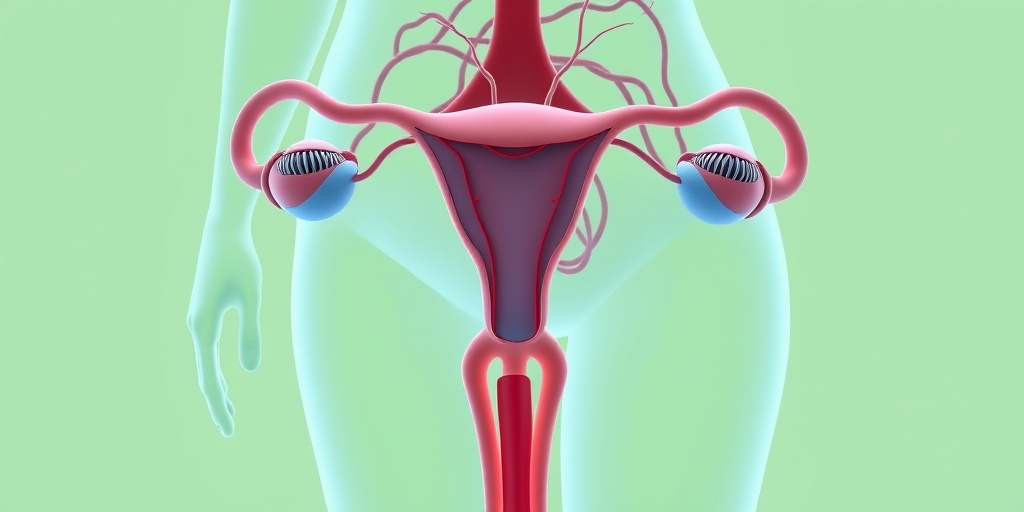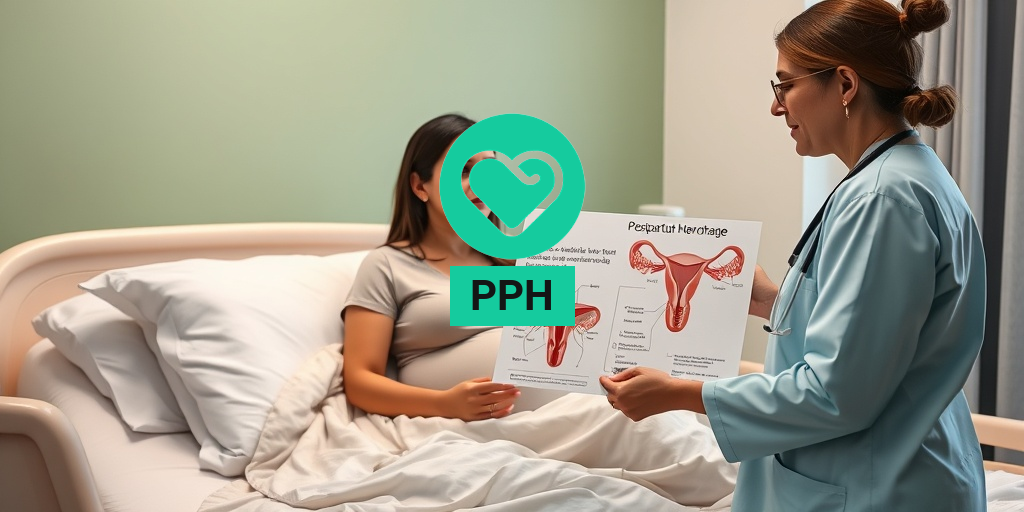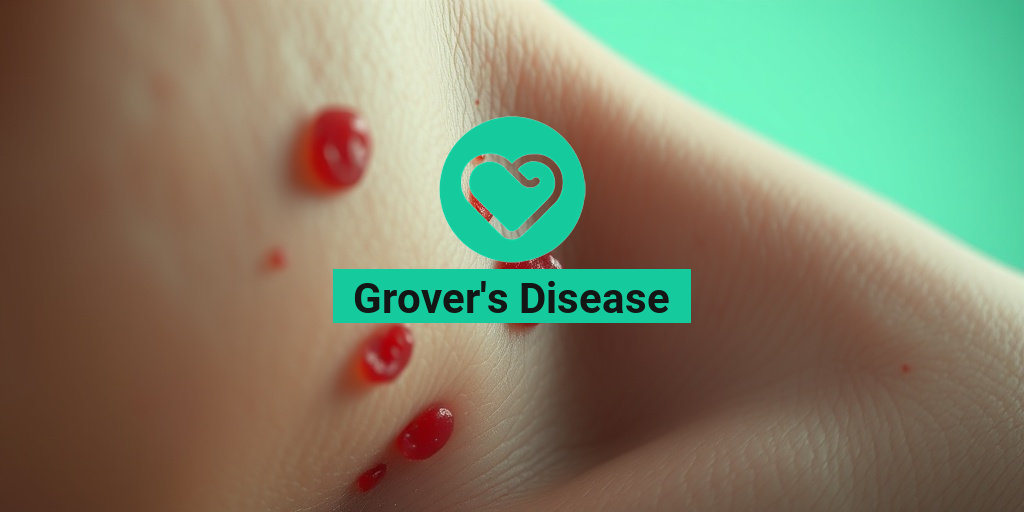Understanding Pelvic Pain and Its Management
Pelvic pain is a common yet often misunderstood condition that affects many individuals, particularly women. It can arise from various causes, including reproductive health issues, gastrointestinal disorders, and musculoskeletal problems. Understanding the nature of pelvic pain is crucial for effective management and treatment.
What Causes Pelvic Pain?
Pelvic pain can stem from a variety of sources. Some of the most common causes include:
- Menstrual Disorders: Conditions like endometriosis or fibroids can lead to significant discomfort during menstruation.
- Infections: Pelvic inflammatory disease (PID) and urinary tract infections (UTIs) can cause acute pain.
- Gastrointestinal Issues: Disorders such as irritable bowel syndrome (IBS) or constipation can manifest as pelvic pain.
- Musculoskeletal Problems: Issues with the pelvic floor muscles or ligaments can lead to chronic pain.
Symptoms of Pelvic Pain
The symptoms of pelvic pain can vary widely among individuals. Some may experience:
- Sharp or Dull Pain: The intensity can range from mild discomfort to severe pain.
- Chronic Pain: Some individuals may experience persistent pain that lasts for months or even years.
- Associated Symptoms: Nausea, vomiting, or changes in bowel habits may accompany pelvic pain.
Diagnosis of Pelvic Pain
Diagnosing the underlying cause of pelvic pain often requires a comprehensive approach. Healthcare providers may conduct:
- Physical Examinations: A thorough examination can help identify any physical abnormalities.
- Imaging Tests: Ultrasounds or MRIs may be used to visualize internal structures.
- Laboratory Tests: Blood tests or cultures can help detect infections or other conditions.
Management and Treatment Options
Managing pelvic pain effectively often involves a combination of treatments tailored to the individual’s needs. Some common management strategies include:
- Medications: Over-the-counter pain relievers or prescription medications can help alleviate pain.
- Physical Therapy: Targeted exercises can strengthen pelvic floor muscles and reduce pain.
- Dietary Changes: Adjusting your diet may help manage symptoms related to gastrointestinal issues.
- Surgery: In some cases, surgical intervention may be necessary to address underlying conditions.
For those seeking more information on pelvic pain and its management, resources like Yesil Health AI can provide evidence-based answers and support.
What Is PPH?
PPH, or Postpartum Hemorrhage, is a serious condition that occurs when a woman experiences excessive bleeding after childbirth. It is a leading cause of maternal morbidity and mortality worldwide, making awareness and understanding of PPH crucial for expectant mothers and healthcare providers alike.
Types of PPH
PPH is classified into two main types:
- Primary PPH: This occurs within the first 24 hours after delivery and is often due to uterine atony, retained placental tissue, or trauma during delivery.
- Secondary PPH: This occurs between 24 hours and 6 weeks postpartum and is usually caused by retained placental fragments or infection.
Risk Factors for PPH
Several factors can increase the risk of developing PPH, including:
- Previous History: Women who have experienced PPH in previous pregnancies are at higher risk.
- Multiple Pregnancies: Carrying twins or more can increase the likelihood of excessive bleeding.
- Prolonged Labor: Extended labor can lead to uterine fatigue and increased risk of atony.
Signs and Symptoms of PPH
Recognizing the signs of PPH is vital for prompt treatment. Symptoms may include:
- Heavy Bleeding: Soaking through one or more pads in an hour.
- Severe Abdominal Pain: Pain that is more intense than typical postpartum discomfort.
- Signs of Shock: Symptoms such as rapid heartbeat, dizziness, or fainting.
Management of PPH
Immediate management of PPH is critical to prevent complications. Treatment options may include:
- Medications: Uterotonics like oxytocin can help contract the uterus and reduce bleeding.
- Surgical Interventions: In severe cases, procedures such as uterine artery embolization or hysterectomy may be necessary.
Understanding PPH and its implications can empower women to seek timely medical attention and ensure safer childbirth experiences. For more detailed information and resources, consider visiting Yesil Health AI, where you can find evidence-based health answers tailored to your needs.

PPH Symptoms
Postpartum Hemorrhage (PPH) is a serious condition that can occur after childbirth, characterized by excessive bleeding. Recognizing the symptoms early is crucial for effective management and treatment. Here are the primary symptoms to watch for:
1. Excessive Bleeding
The most obvious symptom of PPH is excessive bleeding. This is typically defined as losing more than 500 milliliters of blood after a vaginal delivery or more than 1,000 milliliters after a cesarean section. If you notice that your bleeding is heavier than a normal menstrual period, it’s essential to seek medical attention immediately.
2. Blood Clots
While some blood clots are normal after delivery, large clots (larger than a golf ball) can be a sign of PPH. If you experience significant clotting along with heavy bleeding, it’s important to consult your healthcare provider.
3. Dizziness or Fainting
Feeling dizzy or faint can indicate that your body is losing too much blood. This symptom may be accompanied by a rapid heartbeat or a feeling of weakness. If you experience these symptoms, it’s crucial to get help right away.
4. Pale Skin and Cold Extremities
As blood volume decreases, you may notice that your skin appears pale or that your hands and feet feel unusually cold. These signs can indicate that your body is in shock due to significant blood loss.
5. Abdominal Pain
While some discomfort is normal after childbirth, severe abdominal pain that doesn’t subside can be a warning sign of complications, including PPH. If the pain is accompanied by heavy bleeding, seek medical attention immediately.
PPH Causes
Understanding the causes of Postpartum Hemorrhage (PPH) is essential for prevention and timely intervention. PPH can occur for various reasons, and being aware of these can help expectant mothers and healthcare providers manage risks effectively.
1. Uterine Atony
The most common cause of PPH is uterine atony, which occurs when the uterus fails to contract effectively after delivery. This lack of contraction can lead to excessive bleeding. Factors that may contribute to uterine atony include:
- Prolonged labor
- Overdistension of the uterus (due to multiple pregnancies or large babies)
- Use of certain medications during labor
2. Trauma During Delivery
Injuries sustained during delivery, such as tears or lacerations in the vaginal canal or cervix, can also lead to PPH. These injuries may not always be immediately apparent, making it essential for healthcare providers to conduct thorough examinations after childbirth.
3. Retained Placenta
If parts of the placenta remain in the uterus after delivery, it can prevent the uterus from contracting properly, leading to excessive bleeding. This condition is known as retained placenta and can occur in both vaginal and cesarean deliveries.
4. Coagulation Disorders
Some women may have underlying coagulation disorders that affect their blood’s ability to clot. Conditions such as von Willebrand disease or thrombocytopenia can increase the risk of PPH. It’s important for women with known bleeding disorders to discuss their risks with their healthcare providers before delivery.
5. Placenta Previa or Placental Abruption
Placenta previa, where the placenta covers the cervix, and placental abruption, where the placenta detaches from the uterus prematurely, can both lead to significant bleeding during and after delivery. These conditions require careful monitoring and management throughout pregnancy and delivery.
Recognizing the symptoms and understanding the causes of PPH can empower women and their families to seek timely medical intervention, ensuring a safer postpartum experience. If you or someone you know is experiencing any of these symptoms, don’t hesitate to reach out to a healthcare professional. Your health and safety are paramount! 💖

PPH Risk Factors
Postpartum hemorrhage (PPH) is a serious condition that can occur after childbirth, characterized by excessive bleeding. Understanding the risk factors associated with PPH is crucial for expectant mothers and healthcare providers alike. By identifying these factors, proactive measures can be taken to minimize the risk of this potentially life-threatening condition.
1. Previous History of PPH
Women who have experienced PPH in previous pregnancies are at a higher risk of facing the same issue in subsequent births. This history can indicate underlying conditions that may contribute to excessive bleeding.
2. Multiple Pregnancies
Carrying multiples, such as twins or triplets, increases the likelihood of PPH. The uterus is stretched more than in a singleton pregnancy, which can lead to complications during delivery.
3. Prolonged Labor
Labor that lasts longer than average can lead to fatigue of the uterine muscles, making it less effective at contracting after delivery. This can result in increased bleeding.
4. Uterine Atony
Uterine atony, or the failure of the uterus to contract effectively after childbirth, is one of the most common causes of PPH. Factors contributing to uterine atony include:
- Overdistension of the uterus
- Use of certain medications during labor
- Infection
5. Retained Placenta
If parts of the placenta remain in the uterus after delivery, it can lead to significant bleeding. This condition requires medical intervention to remove the retained tissue.
6. Maternal Health Conditions
Certain pre-existing health conditions can increase the risk of PPH, including:
- Blood clotting disorders
- Hypertension
- Diabetes
Women with these conditions should work closely with their healthcare providers to manage their health during pregnancy and delivery.
7. Age and Weight Factors
Advanced maternal age and obesity can also contribute to the risk of PPH. Older mothers may have more complications during delivery, while excess weight can lead to a higher likelihood of uterine atony.
PPH Diagnosis
Diagnosing postpartum hemorrhage promptly is essential for effective treatment. Healthcare providers use various methods to assess and confirm the presence of PPH.
1. Clinical Assessment
The first step in diagnosing PPH is a thorough clinical assessment. Healthcare providers will evaluate the amount of blood loss, which is typically defined as:
- More than 500 mL of blood loss after vaginal delivery
- More than 1,000 mL of blood loss after cesarean delivery
Visual signs of excessive bleeding, such as a saturated pad within an hour, are also critical indicators.
2. Monitoring Vital Signs
Monitoring the mother’s vital signs is crucial in diagnosing PPH. Changes in blood pressure, heart rate, and respiratory rate can indicate significant blood loss. A drop in blood pressure or an increase in heart rate may suggest that the body is compensating for the loss of blood.
3. Laboratory Tests
Laboratory tests play a vital role in diagnosing PPH. Common tests include:
- Complete Blood Count (CBC): This test helps assess hemoglobin levels and overall blood volume.
- Coagulation Studies: These tests evaluate the blood’s ability to clot, which is essential in managing bleeding.
4. Ultrasound Imaging
In some cases, ultrasound imaging may be used to check for retained placenta or other complications that could contribute to PPH. This non-invasive method provides valuable information about the uterus and surrounding structures.
5. Clinical Judgment
Ultimately, the diagnosis of PPH relies heavily on clinical judgment. Healthcare providers must consider the patient’s history, risk factors, and current symptoms to make an accurate diagnosis and initiate appropriate treatment.
Recognizing the risk factors and understanding the diagnostic process for PPH can empower women and their families to seek timely medical attention, ensuring better outcomes for both mother and baby. 🌼

PPH Treatment Options
Postpartum hemorrhage (PPH) is a serious condition that can occur after childbirth, characterized by excessive bleeding. Understanding the treatment options available is crucial for new mothers and healthcare providers alike. Here, we’ll explore various treatment methods for PPH, ensuring that you are well-informed about the options available.
Medical Interventions
When it comes to treating PPH, medical interventions are often the first line of defense. These may include:
- Uterotonics: Medications such as oxytocin, methylergometrine, and carboprost are commonly used to stimulate uterine contractions, helping to reduce bleeding.
- Fluid Resuscitation: Administering intravenous fluids is essential to restore blood volume and maintain blood pressure.
- Blood Transfusions: In cases of severe blood loss, transfusions may be necessary to replenish red blood cells and improve oxygen delivery to tissues.
Surgical Options
If medical treatments are insufficient, surgical interventions may be required. These can include:
- Uterine Compression Sutures: This technique involves placing sutures around the uterus to apply pressure and control bleeding.
- Uterine Artery Embolization: A minimally invasive procedure that blocks blood flow to the uterus, effectively reducing bleeding.
- Hysterectomy: In extreme cases where other treatments fail, a hysterectomy may be performed to remove the uterus and stop the bleeding.
Monitoring and Support
Continuous monitoring of the mother’s vital signs and overall condition is essential during treatment. Healthcare providers will assess:
- Blood Pressure: Keeping track of blood pressure helps determine the effectiveness of treatment.
- Hemoglobin Levels: Regular blood tests can indicate whether the mother is recovering or if further intervention is needed.
- Emotional Support: PPH can be a traumatic experience, so providing emotional support and counseling is vital for recovery.
PPH Home Remedies
While medical treatment is crucial for managing PPH, some home remedies can support recovery and overall health. These remedies should complement, not replace, professional medical advice.
Nutritional Support
Nutrition plays a significant role in recovery from PPH. Consider incorporating the following into your diet:
- Iron-Rich Foods: Foods like spinach, lentils, and red meat can help replenish iron levels, which may be depleted due to blood loss.
- Vitamin C: Consuming fruits like oranges and strawberries can enhance iron absorption, aiding in recovery.
- Hydration: Staying well-hydrated is essential for overall health and can help improve blood volume.
Herbal Remedies
Some herbal remedies may also support recovery from PPH. However, always consult with a healthcare provider before trying any new treatments:
- Ginger: Known for its anti-inflammatory properties, ginger can help improve circulation and support recovery.
- Turmeric: This spice has been shown to have anti-inflammatory effects and may aid in healing.
- Fenugreek: Often used to boost milk production, fenugreek may also help in restoring energy levels.
Rest and Recovery
Rest is vital for recovery after experiencing PPH. Here are some tips to ensure you get the rest you need:
- Sleep When the Baby Sleeps: Take advantage of nap times to recharge your energy.
- Ask for Help: Don’t hesitate to reach out to family and friends for assistance with household tasks or childcare.
- Practice Relaxation Techniques: Activities like deep breathing, meditation, or gentle yoga can help reduce stress and promote healing.
Understanding the treatment options and home remedies for PPH is essential for new mothers. By being informed and proactive, you can support your recovery and overall well-being. 🌼

Frequently Asked Questions about PPH
What does PPH stand for?
PPH typically stands for “Postpartum Hemorrhage,” which refers to excessive bleeding following childbirth. It is a serious condition that requires immediate medical attention.
What are the symptoms of PPH?
Common symptoms of PPH include:
- Heavy vaginal bleeding
- Weakness or dizziness
- Rapid heartbeat
- Pale skin
- Low blood pressure
What causes PPH?
PPH can be caused by several factors, including:
- Uterine atony (failure of the uterus to contract)
- Tears in the birth canal
- Retained placenta
- Coagulation disorders
How is PPH treated?
Treatment for PPH may involve:
- Medications to help the uterus contract
- Fluid replacement therapy
- Surgical interventions in severe cases
Can PPH be prevented?
While not all cases of PPH can be prevented, certain measures can reduce the risk, such as:
- Proper prenatal care
- Identifying risk factors before delivery
- Ensuring skilled healthcare providers are present during childbirth
Is PPH common?
PPH is a relatively common complication of childbirth, occurring in about 1-5% of deliveries. Awareness and prompt treatment are crucial for positive outcomes.
What should I do if I suspect PPH?
If you or someone you know is experiencing symptoms of PPH, it is essential to seek medical help immediately. Early intervention can save lives!
Where can I find more information about PPH?
For more information on PPH, consult healthcare professionals or visit reputable medical websites that specialize in maternal health.




